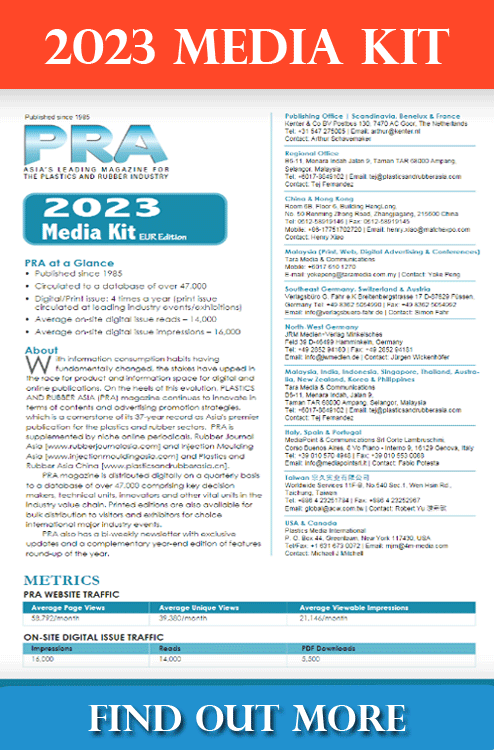Automotive: Building a zero-net waste solution for EV batteries
With the automotive sector’s eventual transition to electric vehicles (EVs), sustainable manufacturing and recycling of EV batteries has become a focus, according to Angelica Buan in this article.
From charging stations to batteries: EV concerns
The global market for electric vehicles (EVs) is booming, especially following the downturn in the automotive sector during the pandemic period. The first half of 2022 saw more global sales of EVs than the six months before, according to an audit by European consultancy Roland Berger.
Meanwhile, according to a Goldman Sachs Research, EVs will account for 50% of new vehicle sales globally by 2035, with EV sales expected to reach 73 million units in 2040, up from around 2 million in 2020. Meanwhile, IDTechEx predicts that EV markets on land, sea, and air will generate US$2.6 trillion by 2042, with a double-digit annual growth rate.
The rapid adoption of EVs has created a gap in charging infrastructure. In Roland Berger ’s third edition EV Charging Index report, which polled over 15,000 customers in 30 countries, representing more than 93% of global EV sales, insufficient charging infrastructure was cited as the top concern by more than half of respondents (53%).
In Southeast Asia, however, a decline in the global EV-to-charging point ratio from 2 to 1.8 in the first half of 2022 suggests that the region’s sector is able to meet the level of demand at this time.
On the other hand, EV batteries are categorically becoming a barrier for wider EV adoption. According to consultancy McKinsey in its Race to Decarbonise Electric Vehicle Batteries report, while global demand for electric mobility has resulted in significant increases in battery production, with over 5 terawatt hours (TWh) of gigafactory capacity expected by 2030, more waste is also being generated as a result of this growth.
Similarly, some experts have disputed the environmental friendliness of EV production, pointing out that the production footprint of an internal combustion engine (ICE) vehicle is roughly twice that of an EV.
Factors ranging from the manufacture of the vehicle’s body to the source of electricity used in the EV’s production and fuel cycle emissions all contribute to the embedded emissions of EVs.
Decarbonisation of battery sector
McKinsey also mentions the carbon footprint of EV batteries, adding that producing a typical EV (with a 75-kWh battery pack) emits more than 7 tonnes of CO2 emissions just from the battery.

As well, McKinsey estimates that the average EV battery today emits up to 100 kg of CO2 equivalent per kilowatt-hour (CO2e/kWh).
Meanwhile, the materials and energy required to manufacture EV batteries account for the majority of the batteries’ carbon footprint. Mining raw materials such as lithium, cobalt, and nickel is not only labourintensive, but also harmful to the environment because it necessitates the use of chemicals and massive amounts of water and it can result in contaminants and toxic waste.
Hence, the market for lithium-ion batteries is anticipated to be driven by the electrification of vehicles. Because of their small size, ability to be recharged, ability to be recycled, and high-density energy output, lithium-ion batteries are already used extensively.
For this reason, demand for nickel will rise because it is required in the production of lithium batteries. Higher-nickel-content batteries are also preferred because they provide more energy and storage at a lower cost, allowing EVs to travel farther.
China dominates EV battery market; Indonesia catching up
The majority of EV batteries are manufactured in Asia, with China accounting for 70% of the market share, according to Global Supply Chains of EV Batteries report by the International Energy Agency (IEA).

According to Deloitte, China dominates the global battery and mineral supply chains because it produces almost 75% of all lithium-ion batteries. It also accounts for 70% of cathode production capacity and 85% of anode production capacity, which are both important components in batteries. Furthermore, it has more than half of the processing and refining capacity for lithium, cobalt, and graphite.
Global supply chains, however, have recently been disrupted, and a number of new players are making a difference, with Indonesia, positioning itself as an EV battery hub due to its abundance of nickel.
Indonesia has the largest nickel reserves in the world, totalling 21 million tonnes and accounting for about 23.7% of all known nickel reserves. These reserves are mostly concentrated in the east of the nation, particularly in Sulawesi and Halmahera. Deloitte cited that 30% of these nickel reserves are under the control of Indonesia’s state-owned mining industry holding company Mining Industry Indonesia (MIND ID) and its subsidiary, PT Aneka Tambang.
As reported by Deloitte, Indonesia expects 2.2 million EVs to be in use by 2030, necessitating approximately 31,000 battery swapping stations and charging station points. According to its EV roadmap, 600,000 EVs and 2.5 million electric motorcycles will be produced by 2030.
(IMA)Subscribe to Get the Latest Updates from IMA Please click here
©2023 Injection Moulding Asia. All rights reserved.











